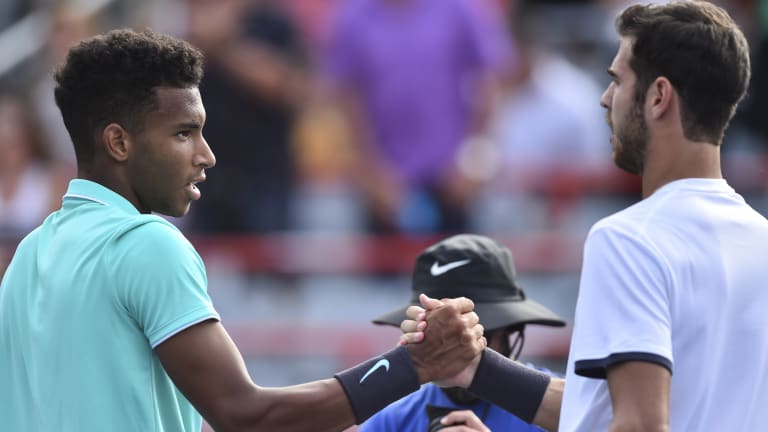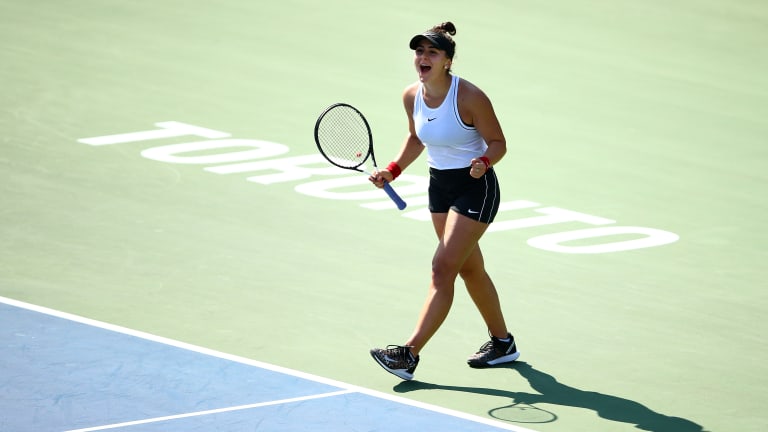ATP Montreal, Canada
Rogers Cup presents perfect split-screen of Canada's teenage phenoms
By Aug 08, 2019ATP Montreal, Canada
Alexei Popyrin beats Andrey Rublev to cap torrid Montreal run for first Masters 1000 title
By Aug 13, 2024ATP Montreal, Canada
Andrey Rublev reaches sixth career ATP Masters 1000 final with win over Matteo Arnaldi in Montreal
By Aug 12, 2024ATP Montreal, Canada
Red-hot Sebastian Korda to face former champion Alexander Zverev in Montreal quarterfinals
By Aug 11, 2024ATP Montreal, Canada
Andrey Rublev dethrones Jannik Sinner in Montreal for second win over a world No. 1
By Aug 11, 2024ATP Montreal, Canada
Andrey Rublev and Jannik Sinner set Saturday quarterfinal showdown in rain-delayed Montreal
By Aug 10, 2024ATP Montreal, Canada
Rain washes out play on Friday at ATP Masters 1000 event in Montreal
By Aug 09, 2024ATP Montreal, Canada
Olympic doubles bronze medalists Taylor Fritz, Tommy Paul win singles matches in Montréal
By Aug 08, 2024ATP Montreal, Canada
Kei Nishikori earns first ATP Masters 1000 match win since 2021 in Montreal
By Aug 07, 2024ATP Montreal, Canada
Denis Shapovalov calls on ATP to “protect players” from fan abuse following D.C. default, fine
By Aug 06, 2024Rogers Cup presents perfect split-screen of Canada's teenage phenoms
Bianca Andreescu and Felix Auger-Aliassime are both Canadian, but their playing styles and personas couldn’t be more different.
Published Aug 08, 2019
Advertising

Rogers Cup presents perfect split-screen of Canada's teenage phenoms
© 2019 Getty Images
Advertising

Rogers Cup presents perfect split-screen of Canada's teenage phenoms
© Getty Images
Advertising
Rogers Cup presents perfect split-screen of Canada's teenage phenoms
Advertising

Rogers Cup presents perfect split-screen of Canada's teenage phenoms